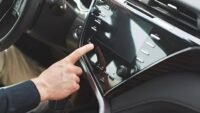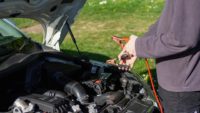Garage door sensors are small but vital. They keep your door safe and working smoothly. When they fail, your door might not open or close properly. This can be frustrating. But don’t rush to call a repair service. Many sensor issues are simple to fix at home. This article guides you through troubleshooting common problems. It helps you decide when to fix it yourself or call a pro. With clear steps, you’ll save time and money.
Why Garage Door Sensors Matter
Sensors detect obstacles in the door’s path. They stop the door from closing on cars, pets, or people. Most modern garage doors have two sensors. They sit near the floor, one on each side. These send an invisible beam to each other. If something breaks the beam, the door reverses or stops. However, dirt, misalignment, or wiring issues can cause trouble. Knowing how to check these saves hassle.
When you press your remote and nothing happens, you might ask, Why is my garage door not responding to the remote? Sensor problems are often the cause. Dirty lenses or misaligned units block the beam. This stops the door from moving. Also, deciding whether I should repair or replace? depends on the issue’s severity. For minor fixes like cleaning, repair works fine. But older systems might need replacing. Why is my garage door not responding to the remote? It could be a simple sensor fault. Check before assuming bigger issues.
Power problems also affect sensors. Loose wires or dead batteries in the opener can mimic sensor failure. So, should I repair or replace? If wiring is damaged, repairs might suffice. But if sensors are old and faulty, replacement is smarter. By troubleshooting first, you clarify the problem. This helps you make the right call.
Common Sensor Problems and Their Signs
Let’s look at typical issues. Spotting the cause is the first step.
Dirty Sensor Lenses
Dust or cobwebs cover sensors. This blocks the beam. The door won’t close. You might see a blinking light on the sensor. Cleaning fixes this fast.
Misaligned Sensors
Sensors must face each other directly. If one is knocked out of place, the beam breaks. The door stops working. A steady light on both sensors means they’re aligned.
Wiring Issues
Loose or damaged wires disrupt power. This makes sensors fail. The door might not respond at all. Check connections to spot this.
Faulty Sensors
Old sensors wear out. They stop detecting the beam. If cleaning and alignment don’t work, the sensor itself might be broken.
- Look for blinking lights to spot sensor issues.
- Check for obstacles blocking the sensor path.
- Test the door with the wall switch to rule out remote problems.
By identifying these, you narrow down the cause.
How to Troubleshoot Garage Door Sensor Problems
Follow these steps to diagnose and fix issues. They’re safe and straightforward.
Step 1: Check for Dirt
Inspect both sensors. Look for dust, dirt, or spider webs. Wipe lenses with a soft, dry cloth. Avoid harsh cleaners. Test the door after cleaning. If it works, you’re done.
Step 2: Verify Alignment
Ensure sensors are level. Each should have a steady light. If one blinks, nudge it gently. Move it until both lights are solid. Tighten any loose brackets. Try the door again.
Step 3: Inspect Wiring
Check wires from sensors to the opener. Look for loose or frayed connections. Tighten screws if needed. If wires are cut, you’ll need a pro. Test after securing connections.
Step 4: Test the Power
Ensure the opener is plugged in. Check for tripped circuit breakers. Replace batteries in the remote or opener if needed. Power issues often mimic sensor problems.
Step 5: Test the Sensors
Block the beam with your hand. The door should stop or reverse. If it doesn’t, the sensors might be faulty. This confirms if replacement is needed.
These steps solve most issues. If the problem persists, it’s time to think about repairs or replacement.
When to Repair or Replace Sensors
Deciding between fixing or replacing depends on a few factors. Repairs work for minor issues. Cleaning or realigning sensors is quick and cheap. Wiring fixes are also simple if the damage is small. However, older sensors might not be worth saving. If they’re over 10 years old, they’re likely outdated. New sensors are more reliable and efficient.
Replacement makes sense for recurring problems. Faulty sensors keep causing trouble. New ones cost little compared to repeated repairs. Plus, modern sensors meet current safety standards. Check your door’s manual to find compatible models. If unsure, ask a professional.
When to Call a Professional
Some issues need expert help. Damaged wiring in walls is risky to fix alone. Complex opener problems also require skills. If you’ve tried troubleshooting and the door still fails, call a pro. They have tools to diagnose deeper issues. Look for licensed technicians with good reviews. They ensure safe, lasting fixes.
Professionals also advise on upgrades. If your system is old, they might suggest a new opener or sensors. This prevents future breakdowns. Their expertise builds trust and saves stress.
Preventing Future Sensor Problems
Maintenance keeps sensors working. Simple habits make a difference.
- Clean sensors monthly to remove dust.
- Check alignment after storms or bumps.
- Inspect wires for wear every six months.
- Test sensors regularly for quick response.
These steps reduce the chance of sudden failures. Also, keep the garage floor clear. Debris can block sensors. Weatherproofing helps too. Protect sensors from rain or extreme cold with covers.
Conclusion
Garage door sensor problems are common but fixable. Dirt, misalignment, or wiring issues are often to blame. By troubleshooting, you can solve many faults yourself. Clean lenses, check alignment, and test power first. If problems persist, decide whether to repair or replace. Simple fixes save money, but old sensors might need upgrading. For complex issues, trust professionals. Regular maintenance prevents future headaches. Keep your garage door safe and functional with these tips.




